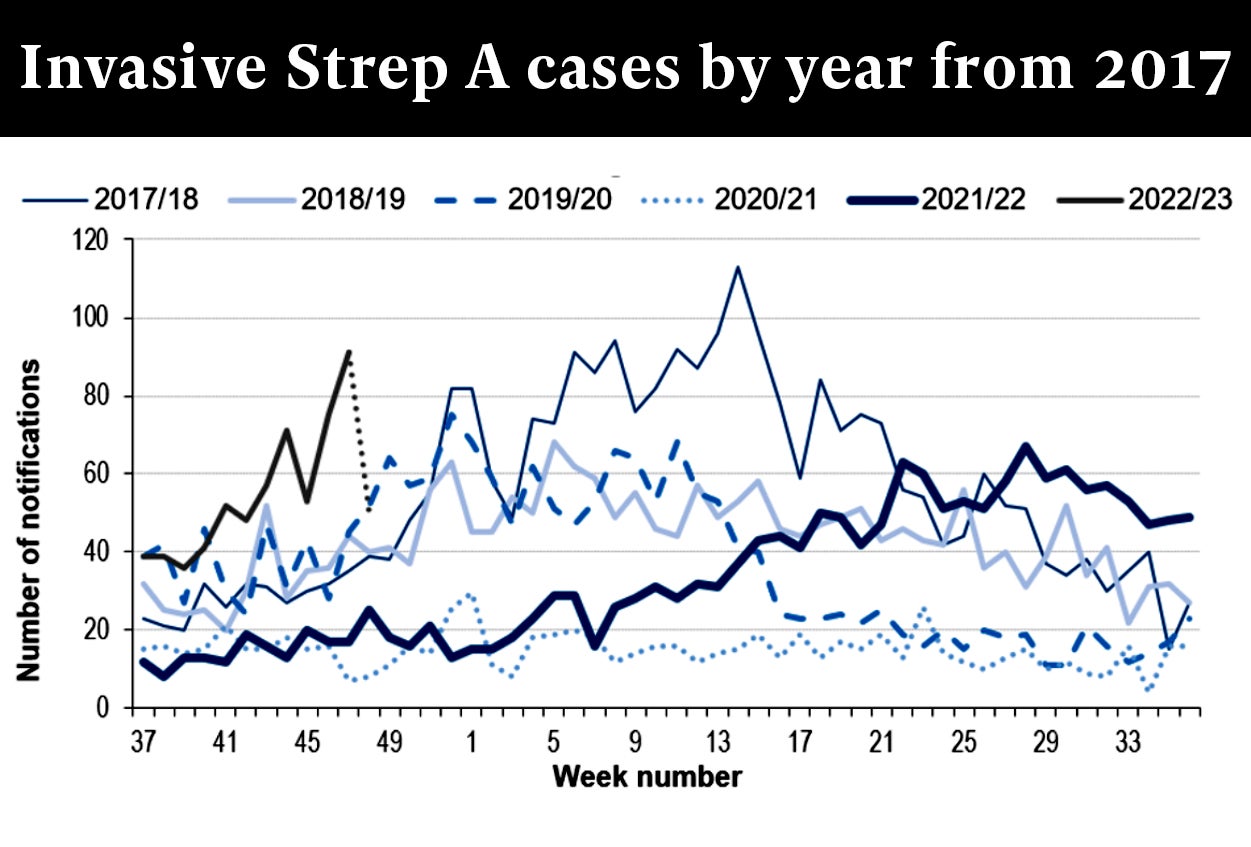How many Strep A deaths are there per year in the UK?
Cases of related infections are above usual and dozens have died including children
Your support helps us to tell the story
From reproductive rights to climate change to Big Tech, The Independent is on the ground when the story is developing. Whether it's investigating the financials of Elon Musk's pro-Trump PAC or producing our latest documentary, 'The A Word', which shines a light on the American women fighting for reproductive rights, we know how important it is to parse out the facts from the messaging.
At such a critical moment in US history, we need reporters on the ground. Your donation allows us to keep sending journalists to speak to both sides of the story.
The Independent is trusted by Americans across the entire political spectrum. And unlike many other quality news outlets, we choose not to lock Americans out of our reporting and analysis with paywalls. We believe quality journalism should be available to everyone, paid for by those who can afford it.
Your support makes all the difference.At least 5 children have now died from Strep A-related infections in the current outbreak.
Group A strep bacteria can cause many different illnesses, including scarlet fever, the skin infection impetigo, and strep throat.
While the vast majority of infections are relatively mild, sometimes the bacteria cause a life-threatening illness called invasive Group A Streptococcal disease (iGAS).
Cases of iGAS are higher than usual this year. Since September, when the disease monitoring year began, the UK Health Security Agency (UKHSA) said there have been 659 reports of iGAS across England, higher than at the same time over the last five years.
In around three months, there have been 85 cases in children aged one to four, compared to 194 cases in that age group for the whole of 2017/2018, the last time cases were notably higher than expected.
There have also been 60 cases in children aged five to nine.
By 4 December, 60 deaths have been reported across all age groups in England – 15 of whom were under the age of 15.
Of the children, 13 were in England, one was in Wales and one was in Northern Ireland.

The UKHSA said cases usually show the steepest rises in the New Year, but have increased sharply in recent weeks. The overall fatality rate to date, 9.3 per cent, is comparable to recent seasons.
In 2017/18 the rate was 12.4 per cent with around 370 deaths out of 2,967 cases in the whole year.
The next year saw a fatality rate of 9.1 per cent, while the 2019-2021 rate (with two years’ data combined due to Covid-19 disruption) was 11.3 per cent.
The latest full monitoring year saw a fatality rate of 10 per cent, with around 180 deaths in 1,766 cases.
Figures show that scarlet fever cases also remain much higher than normal, with 6,601 since 12 September, more than twice as many as the 2,538 at the same point in 2017/2018.
Scarlet fever is usually a mild illness that is treated with antibiotics but is also highly infectious.

Dr Colin Brown, deputy director of the UKHSA, said: “Scarlet fever and ‘strep throat’ are common childhood illnesses that can be treated easily with antibiotics.
“Please visit NHS.uk, contact 111 online or your GP surgery if your child has symptoms of this infection so they can be assessed for treatment.
“Very rarely, the bacteria can get into the bloodstream and cause more serious illness called invasive Group A strep.
“We know that this is concerning for parents, but I want to stress that while we are seeing an increase in cases in children, this remains very uncommon.
“There a lots of winter bugs circulating that can make your child feel unwell, that mostly aren’t cause for alarm.
“However, make sure you talk to a health professional if your child is getting worse after a bout of scarlet fever, a sore throat or respiratory infection - look out for signs such as a fever that won’t go down, dehydration, extreme tiredness and difficulty breathing.”




Join our commenting forum
Join thought-provoking conversations, follow other Independent readers and see their replies
Comments